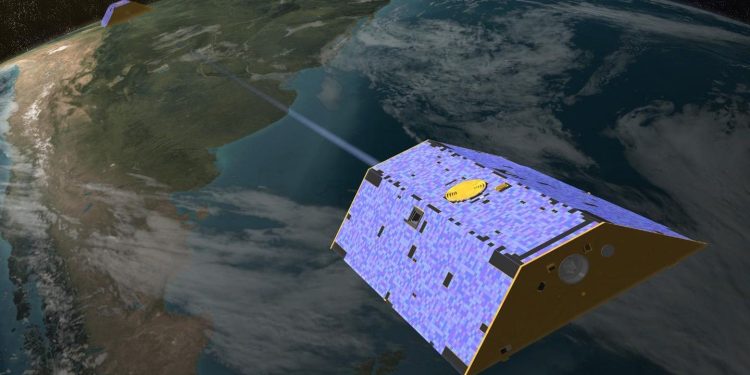Satellites have detected a strange gravitational signal off the coast of Africa almost 20 years ago, suggesting something unusual happened deep within the planet to distort its gravitational field, according to a recent study.
The large gravitational anomaly lasted about two years in the eastern Atlantic Ocean. It peaked in January 2007, the same month Steve Jobs announced the first iPhone (although, of course, there was no connection between the two events).
Researchers suspect that the strange anomaly and shaking was caused by a previously unknown geological process. Their conclusions, published on August 28 in the journal Geophysical research lettersindicated that a movement of minerals could have caused a rapid redistribution of mass in the deep mantle, near the core, thus changing the Earth’s magnetic field.
Co-author of the study Mioara Mandea — geophysicist at the National Center for Space Studies (CNES) in France and principal investigator of the European Research Council’s Gravimetry, Magnetism, Rotation and Central Flux project — told Live Science that she initially questioned the validity of the signal.
“As is often the case in scientific research, my first response was a question: Is the signal authentic, how can it be validated, and how should it be interpreted?” Mandea said in an email. “While the result and its publication were certainly a source of satisfaction, the overriding idea was to think about the next steps and possible implications.”
The GRACE satellites were a pair of identical spacecraft operated in a joint mission between NASA and the German Aerospace Center (DLR). Scientists used these satellites, active from 2002 until they ran out of fuel in 2017, to measure variations in Earth’s gravity. The satellites moved in tandem (one behind the other) around Earth, and the researchers measured the distance between the two objects to look for any changes that occurred as a result of a variation in Earth’s gravitational force, according to NASA.
Such gravity variations are often caused by changes in the concentration of mass – more mass means more gravity. For example, water currents move mass in the ocean, which can cause localized variations in Earth’s gravitational field. In the new study, researchers scoured GRACE data for anomalous gravity signals that might come from deep within the Earth, rather than from moving water on or near the surface.
The signal was a north-south oriented gravitational anomaly, extending about 4,350 miles (7,000 kilometers) — or nearly the length of the entire African continent — from 2006 to 2008, according to the study.
Researchers are learning more about Earth’s deep mantle and the boundary between rocky layer and liquid outer core of our planetbut the lower part of the mantle consists largely of magnesium silicate (MgSiO3). The study authors suggested that the mass redistributions they attributed to the signal were the result of the presence of a perovskite in post-perovskite phase transformation in this lower section of the mantle, where the structure of the magnesium silicate changed under pressure, moving mass deep within the Earth.
Mandea noted that the main message of the study was that the Earth is complex and different data sets and methods are needed to understand its internal processes.
“The Earth is a complex system that needs to be studied using diverse data sets and complementary analysis methods,” Mandea said. “This synergy gives us the opportunity to discover and better understand the processes hidden inside the depths of the Earth.”









